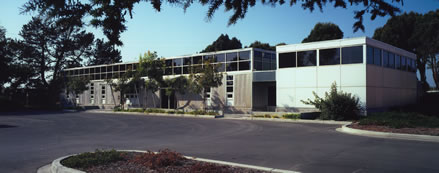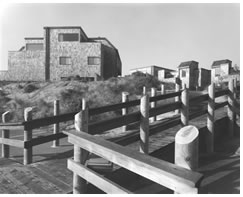
A personal view of mergers and acquisitions

Most architects beginning a practice are not planning for transition—they are hoping just to survive. Once survival is assured, however, motivation often evolves into finding the best path for transition. For some firms, grooming the next generation for a smooth succession or selling shares to promising young talent remains the best option. For others, it makes more sense to acquire another firm—or be acquired. I have had experience with all three.
The primary benefit of a merger or acquisition is new opportunities in terms of client types, contacts, and firm-management practices. The downside is possible dilution of the "brand," the firm name.

Stay ahead of the
curve
When I started my own firm, I wanted to make my own design statement and
work closely with clients and other independent-minded young architects.
In 1965, one of our partners was not an architect (unheard of in the '60s!).
He was responsible for our marketing and administration and was key to
our early success. We also formed an alliance with a land planner, who
brought us a lot of commissions.
Today, firms of all sizes offer services that are not traditional, including post-construction analysis, real-estate analysis, and workplace strategies. There are a lot of opportunities—and partners—outside standard practice. For example, architects are beginning to offer "virtual services"; they are employed to analyze a problem with architectural software although no built project is intended. Some firms design retail stores and Web sites together. The lesson is: Be open to partners outside the profession who might bring relevant expertise to your practice.
Diversify services
In our cyclical economy, firms with a variety of project types—including
institutional—fare better than those that do one building type. After
running our own firm for three years, we wanted to expand our market base
beyond our focus of housing and small commercial projects. We hoped to
take on large government projects, and the opportunity to do so arose
when a large firm based in Southern California offered to acquire our
firm. We agreed and became their Northern California office. The opportunity,
financial compensation, and greater stability balanced our regret at having
to give up our name. Following the merger, we received commissions from
clients such as the General Services Administration, U.S. Army Corp of
Engineers, and the California Highway Patrol.
If there's a misalignment—move!
After four years, we found that our young culture was not aligned with
the older firm, and we went our separate ways. Although we returned to
our former name, it was like starting over. Fortunately, we had resources
and successful new relationships with institutional clients that led us
to California's Central Valley. We opened a branch office in Modesto,
which grew, and we eventually sold it to the younger partners in the office.
 From
the early 1970s into the 1980s, our firm grew and expanded into new markets,
including sports buildings. By the early 1980s we employed 60 people engaged
with a mix of private- and public-sector work.
From
the early 1970s into the 1980s, our firm grew and expanded into new markets,
including sports buildings. By the early 1980s we employed 60 people engaged
with a mix of private- and public-sector work.
By the late 1980s, however, the four main partners got restless and wanted to pursue separate interests. Two of them formed a new firm that focused on sports-related work, and the third went to work for a professional organization. A younger associate became my partner. Within a short time however, the promising younger partner had to retire because of illness, and I didn't have a back-up plan.
Know yourself
I have always preferred sharing a practice and the responsibility of making
tough decisions in design, client relationships, project management, and
financial management. So, after my new partner had to retire, I asked
the firm's financial management consultant if he knew of anyone in a similar
boat. He told me he had worked with an architect who had a strong interiors,
historic renovation, and building-evaluation practice, which complemented
the housing/sports/institutional practice that I had built. A sole practitioner
who owned a firm of approximately the same value, she also wanted partners.
In 1989, we merged and threw all the stock into one pot—it was easy
because we had the same systems and complementary personalities.
Look for opportunities
In the mid-1990s, The Ratcliff Architects approached us about a possible
merger. Both firms were struggling to develop long-term succession plans
that would satisfy the partners' requirements. There were some candidates,
but not enough of them for an orderly transition in either office. Since
Ratcliff has a strong portfolio in health-care and education facilities,
we decided that the combined firms could refine their focus and become
a strong regional competitor. Once again, it was hard to give up the name
that had been with my firm for most of my 30 years of practice. Ratcliff,
however, had been in existence since 1906, had the stronger regional name
recognition, and was going to practice far beyond my retirement. We met
with clients from both firms to explain the combined strength of the new
firm and refined our focus to core areas. The combined firms have prospered
over the last five years.
Choose the right
path for you
I have found that remaining flexible about firm ownership structure brings
the greatest benefit in terms of collaboration and financial reward. For
me, the right path has meant more clients to work with and greater variety
of projects to design and build. Foremost, it is essential to understand
whether you are a solitary kind of architect or a collaborative one.
Bottom line? The strength of a firm is only partially in the name—it is mostly in the people.
Copyright 2001 The American Institute of Architects. All rights reserved.
![]()
|
|
|